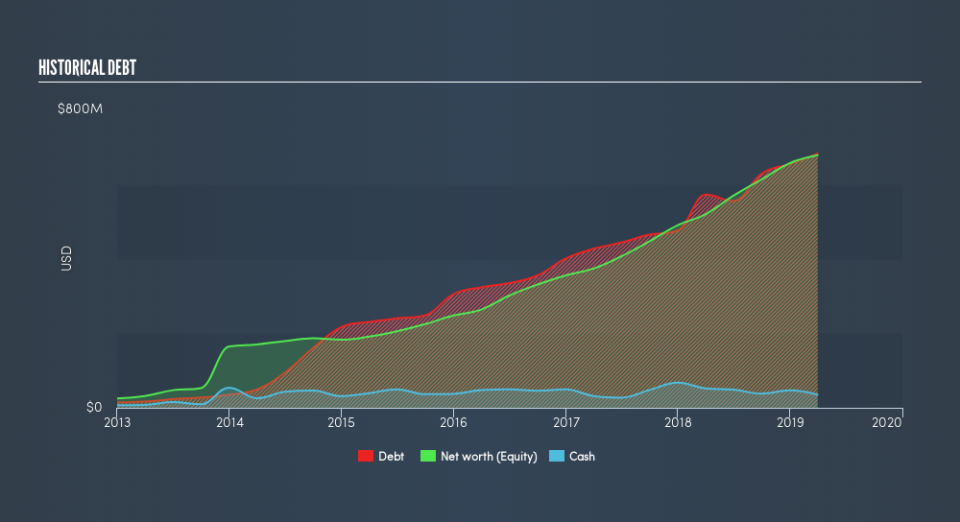Are LGI Homes, Inc.'s (NASDAQ:LGIH) Interest Costs Too High?

Want to participate in a short research study? Help shape the future of investing tools and you could win a $250 gift card!
LGI Homes, Inc. (NASDAQ:LGIH) is a small-cap stock with a market capitalization of US$1.6b. While investors primarily focus on the growth potential and competitive landscape of the small-cap companies, they end up ignoring a key aspect, which could be the biggest threat to its existence: its financial health. Why is it important? Understanding the company's financial health becomes crucial, as mismanagement of capital can lead to bankruptcies, which occur at a higher rate for small-caps. The following basic checks can help you get a picture of the company's balance sheet strength. Nevertheless, this is not a comprehensive overview, so I recommend you dig deeper yourself into LGIH here.
Does LGIH Produce Much Cash Relative To Its Debt?
LGIH's debt levels surged from US$572m to US$681m over the last 12 months , which accounts for long term debt. With this increase in debt, the current cash and short-term investment levels stands at US$35m to keep the business going. Moving on, operating cash flow was negative over the last twelve months. For this article’s sake, I won’t be looking at this today, but you can take a look at some of LGIH’s operating efficiency ratios such as ROA here.
Can LGIH pay its short-term liabilities?
With current liabilities at US$152m, the company has been able to meet these commitments with a current assets level of US$1.4b, leading to a 8.94x current account ratio. The current ratio is the number you get when you divide current assets by current liabilities. However, a ratio above 3x may be considered excessive by some investors, yet this is not usually a major negative for a company.
Can LGIH service its debt comfortably?
Since total debt levels exceed equity, LGIH is a highly leveraged company. This is a bit unusual for a small-cap stock, since they generally have a harder time borrowing than large more established companies.
Next Steps:
Although LGIH’s debt level is towards the higher end of the spectrum, its cash flow coverage seems adequate to meet obligations which means its debt is being efficiently utilised. This may mean this is an optimal capital structure for the business, given that it is also meeting its short-term commitment. I admit this is a fairly basic analysis for LGIH's financial health. Other important fundamentals need to be considered alongside. I recommend you continue to research LGI Homes to get a better picture of the small-cap by looking at:
Future Outlook: What are well-informed industry analysts predicting for LGIH’s future growth? Take a look at our free research report of analyst consensus for LGIH’s outlook.
Historical Performance: What has LGIH's returns been like over the past? Go into more detail in the past track record analysis and take a look at the free visual representations of our analysis for more clarity.
Other High-Performing Stocks: Are there other stocks that provide better prospects with proven track records? Explore our free list of these great stocks here.
We aim to bring you long-term focused research analysis driven by fundamental data. Note that our analysis may not factor in the latest price-sensitive company announcements or qualitative material.
If you spot an error that warrants correction, please contact the editor at editorial-team@simplywallst.com. This article by Simply Wall St is general in nature. It does not constitute a recommendation to buy or sell any stock, and does not take account of your objectives, or your financial situation. Simply Wall St has no position in the stocks mentioned. Thank you for reading.

